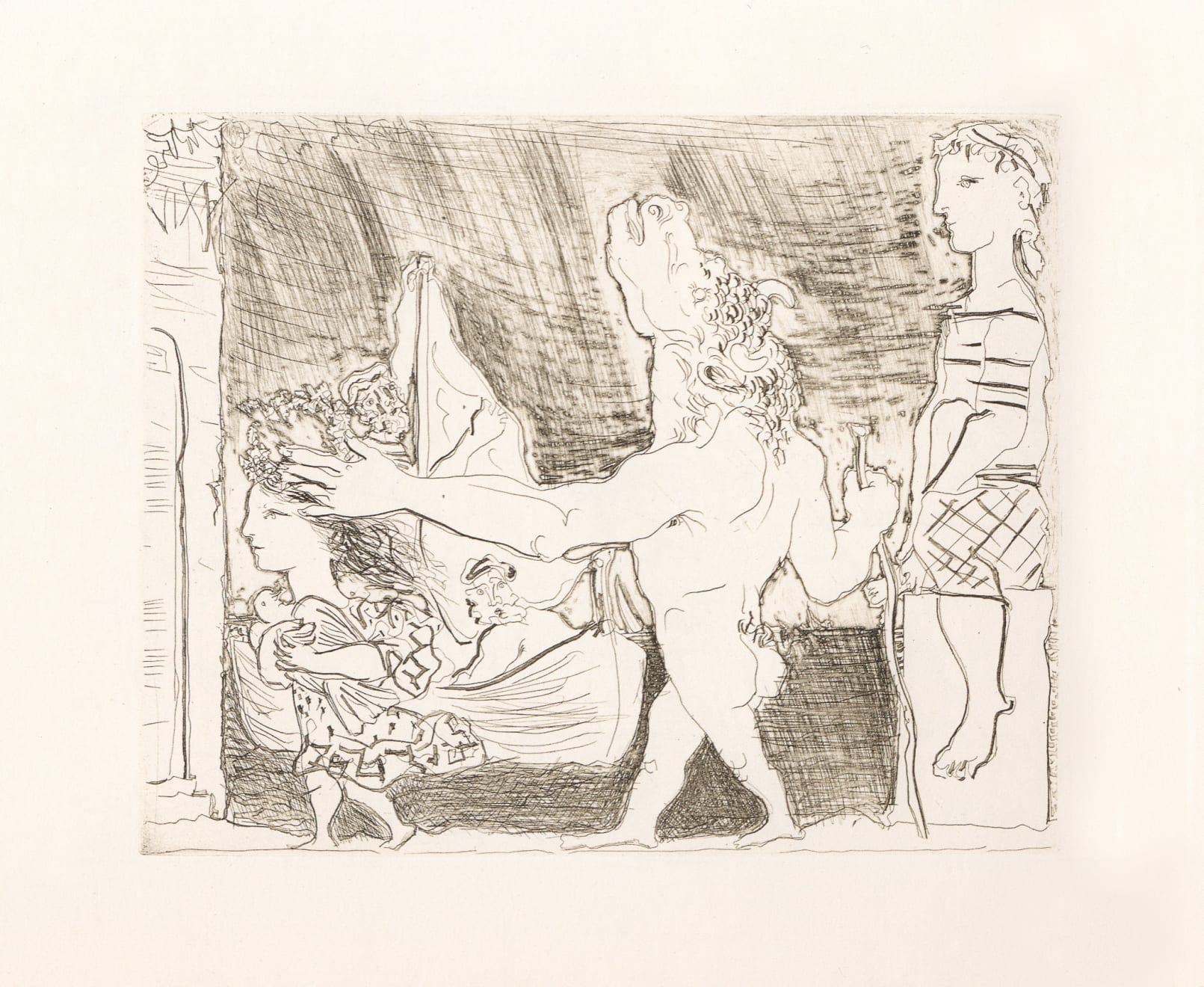PABLO PICASSO
Literature
In the first “Blind Minotaur” image of the Suite Vollard, the weather is fair; however, here Picasso shows his cast of characters in a storm. The water is agitated and rain pours vertically and horizontally, spilling off of the fishermen’s boat as they struggle to secure the sail. Their expressions of concern have deepened to open-mouthed fear and horror. The Minotaur maintains the same position, expression, and gesture in all four plates, but the little girl (who looks like Picasso’s mistress Marie-Thérèse Walter) changes somewhat. Here she wears a determined expression, bracing against the wind and rain. Rather than a bouquet of flowers, she protectively clutches a dove—a symbolic but also factual detail (Marie-Thérèse kept doves and pigeons as pets).i The young sailor who is thought to represent Picasso as a young man maintains his composure, seated casually on a post to the right, even smiling contentedly as if he enjoys the spectacle.
Aside from the complex iconography, the technical aspects of this print are also worth noting. Picasso was a highly inventive and independent artist who had little regard for conventional technique. This was apparent in all of his work, and particularly so in etchings such as the present example. In an almost expressionistic approach, Picasso conveys the tumultuous skies and water of the composition using a combination of etching and rigorous use of the scraper, as noted by Museum of Modern Art curator Deborah Wye in A Picasso Portfolio.ii It may have been this very plate that Picasso scholar Brigitte Baer had in mind when she stated that “Picasso’s use of the scraper is exceptional. Handled with extreme vigor, his scraper skids…and leaves a sort of wavelet along its path. The surface of the plate takes on a tortured aspect which produces a strong tone. This is that much the more irregular since Picasso’s scraper, always chipped, never sharpened, claws at the copperplate like some sort of gardening tool. Picasso said that Rembrandt too scraped away like a madman…and that he really could not see why anyone would criticize these tones, and that they were perfect just as they were”.iii Time has proven him correct: the intensity of his approach in such images brilliantly enhances the emotional tone. It is also interesting to note that Rembrandt’s influence, which is a strong presence throughout the Suite Vollard, is again evident here.
The current impression is from the edition of 260 printed on Montval laid paper watermarked “Vollard” and “Picasso”. (There was also an edition of fifty with wide margins and a separate watermark, and a small edition of three.) It was printed by Roger Lacourière in late 1938 or early 1939. The untimely death of Ambroise Vollard in the summer of 1939 delayed their commerce until 1948 when the prints were acquired by dealer Henri Petiet through the Vollard estate.
i See Deborah Wye, A Picasso Portfolio: Prints from the Museum of Modern Art, New York, 2010, 34.
ii ibid., 57.
iii Picasso the Engraver: Selections from the Musée Picasso, The Metropolitan Museum of Art, 1997, 71.
